




























© Getty Images
0 / 29 Fotos
Ground-breaking
- The contours of the Earth were slightly altered after the great earthquake of 2004 shook Indonesia, followed soon afterwards by a powerful tsunami.
© Getty Images
1 / 29 Fotos
City moved - In February 2010, a town in Chile called Concepción moved three meters west from its original location after a destructive earthquake. The tremor also caused a similar effect in other cities in Chile and several in Argentina, though to a lesser extent.
© Reuters
2 / 29 Fotos
Ring of fire - The Pacific Ring of Fire is the most geologically active region on Earth, an arc around the Pacific Ocean where many volcanoes and earthquakes are formed. Countries at risk include China, Russia, Japan and regions of the Americas.
© Reuters
3 / 29 Fotos
Come rain or shine - Earthquakes take place whatever the weather. Tremors aren't choosy and can occur in hot and cold climates in wet or dry conditions. Atmospheric pressure is not influenced by geography.
© Reuters
4 / 29 Fotos
Human exploration - Drilling for oil also causes small earthquakes. But don't be alarmed! The extraction of minerals, metals and other raw materials from the bowels of the earth generates the movement of the tectonic plates, resulting in mini-tremors that are barely perceived.
© Shutterstock
5 / 29 Fotos
Feeling its way around - The seismic waves of an earthquake on one side of the Earth can reach regions on the opposite side of the planet. The 1960 Chilean earthquake was felt around the globe for days.
© Shutterstock
6 / 29 Fotos
Traveling by stealth? - The city of San Francisco in the United States is moving toward Los Angeles at a rate of five centimeters per year, claims a study.
© Reuters
7 / 29 Fotos
Influences from space - In addition to the changing of the tides, the Sun and the Moon can also induce earth tremors.
© Shutterstock
8 / 29 Fotos
Monster quake - One of the largest and most powerful earthquakes recorded in history occurred in Chile in 1960, a frightening 9.5 magnitude on the Richter scale.
© Reuters
9 / 29 Fotos
And in China, too - The other side of the world also experienced a deadly quake. This one took place in 1553 in China, when 830,000 souls perished.
© Reuters
10 / 29 Fotos
Impressive but worrying figures - Throughout the world approximately 500,000 tremors are detected out of which 100,000 can be physically felt. Fortunately, only about 100 cause significant damage.
© Shutterstock
11 / 29 Fotos
One too many - Uniquely, Japan suffers about 1,500 earthquakes every year.
© Reuters
12 / 29 Fotos
Countries with the least probability of quakes - According to the 2015 World Risk Report published by the United Nations University for Environment and Human Security, Qatar was ranked the country with the least natural disaster risk (0.1%) followed by Malta (0.61% ) and Barbados (1.16%).
© Reuters
13 / 29 Fotos
First responders - One of the countries geared to respond quickly in an event of an earthquake is Chile. It has a long history of having to deal with the aftermath of violent quakes, and lives with the threat of new tremors everyday. The Government's priority is to make the population aware of the risks. Buildings are constructed to withstand earthquakes, and when ordered to do so, people have to evacuate and area immediately.
© Reuters
14 / 29 Fotos
In the line of fire - Costa Rica in Central America is a narrow country made up of a coastal plain separated by the Cordillera mountain range, formed by volcanoes. It's a geographical area prone to frequent earthquakes, hurricanes and tropical storms.
© Reuters
15 / 29 Fotos
Precious metal - Earthquakes can turn water into gold. According to New Scientist Magazine, more than 80 percent of our planet's gold deposits are as a result of subterranean earthquakes. The precious metal is formed when mineral-rich water flows through fissures in the rocks anywhere between 5 and 30 kilometers below ground.
© Shutterstock
16 / 29 Fotos
Backwards in time - An earthquake in 1811 was responsible for temporarily reversing the flow of the Mississippi River.
© Shutterstock
17 / 29 Fotos
And time waits for no-one - Days are said to have shortened as a result earthquakes and tsunamis. An earthquake that struck in 2011 near Japan increased the speed of the earth's rotation. As a result, some now estimate that globe spins almost two microseconds faster, the adverse effect being the shortening of the day, also by two microseconds.
© Shutterstock
18 / 29 Fotos
Short shelf life - However, there is another version of the event, and why the day is now shorter. According to NASA, the real reason was due to the immense displacement of the planet's mass which occurred when the Indian continental shelf shifted under that of Burma's (Myanmar's). Apparently, this has resulted in the shortening of the day not by two but by three microseconds.
© Shutterstock
19 / 29 Fotos
Investigating the past - Scientists can now picture the devastating results of tsunamis past by analyzing the site of the tidal wave for deposits of debris like rocks, shells, stones and even human bones. From the detritus it's possible to calculate the size and speed of the waves.
© Reuters
20 / 29 Fotos
True north is a lie? - As a result of tsunamis, the North Pole has shifted 2.5 centimeters to the northeast. This is because the imaginary axis around which the planet rotates is always shaken, resulting in the Earth leaning slightly.
© Shutterstock
21 / 29 Fotos
The point of no return - The region of the planet where tsunamis are most prevalent is across the Pacific Ocean.
© Shutterstock
22 / 29 Fotos
The deepest - Studies also suggest that geological faults have surfaced on the ocean floor and that the seabed has sunk to more than 20 meters in some places as a result of tsunami activity.
© Shutterstock
23 / 29 Fotos
Paradise lost - There have been recorded cases of Indian Ocean islands shifting position to up to 20 meters after being struck by a tsunami. Of these, Trinkat Island was parted in three by the destructive force of the water. Others simply sank.
© Shutterstock
24 / 29 Fotos
How tsunamis are born - There are several reasons why a tsunami is formed. They can arise as a result of seismic activity, volcanic eruptions, massive landslides and submarine explosions (such as the detonation of nuclear devices).
© Reuters
25 / 29 Fotos
Wave goodbye - The largest wave ever recorded swept into Lituya Bay in Alaska on 9 July, 1958. The tsunami followed a devastating earthquake.
© Shutterstock
26 / 29 Fotos
Size matters - To get an idea of the size of the tsunami that struck Alaska on that fateful day, the wall of water was in excess of 524 meters, higher than the 102-story Empire State Building, which stands a mere 443 meters.
© Reuters
27 / 29 Fotos
Earliest acconts
- One of the earliest records of a tsunami taking place was included in the account of terrible 1755 earthquake which struck Lisbon. Soon after the tremors subsided, the city was swamped by a series of giant waves. However, scientists concur that this natural phenomenon has been taking place for millions of years. See also: At risk: These cities may disappear by 2030 due to rising sea levels
© Reuters
28 / 29 Fotos
© Getty Images
0 / 29 Fotos
Ground-breaking
- The contours of the Earth were slightly altered after the great earthquake of 2004 shook Indonesia, followed soon afterwards by a powerful tsunami.
© Getty Images
1 / 29 Fotos
City moved - In February 2010, a town in Chile called Concepción moved three meters west from its original location after a destructive earthquake. The tremor also caused a similar effect in other cities in Chile and several in Argentina, though to a lesser extent.
© Reuters
2 / 29 Fotos
Ring of fire - The Pacific Ring of Fire is the most geologically active region on Earth, an arc around the Pacific Ocean where many volcanoes and earthquakes are formed. Countries at risk include China, Russia, Japan and regions of the Americas.
© Reuters
3 / 29 Fotos
Come rain or shine - Earthquakes take place whatever the weather. Tremors aren't choosy and can occur in hot and cold climates in wet or dry conditions. Atmospheric pressure is not influenced by geography.
© Reuters
4 / 29 Fotos
Human exploration - Drilling for oil also causes small earthquakes. But don't be alarmed! The extraction of minerals, metals and other raw materials from the bowels of the earth generates the movement of the tectonic plates, resulting in mini-tremors that are barely perceived.
© Shutterstock
5 / 29 Fotos
Feeling its way around - The seismic waves of an earthquake on one side of the Earth can reach regions on the opposite side of the planet. The 1960 Chilean earthquake was felt around the globe for days.
© Shutterstock
6 / 29 Fotos
Traveling by stealth? - The city of San Francisco in the United States is moving toward Los Angeles at a rate of five centimeters per year, claims a study.
© Reuters
7 / 29 Fotos
Influences from space - In addition to the changing of the tides, the Sun and the Moon can also induce earth tremors.
© Shutterstock
8 / 29 Fotos
Monster quake - One of the largest and most powerful earthquakes recorded in history occurred in Chile in 1960, a frightening 9.5 magnitude on the Richter scale.
© Reuters
9 / 29 Fotos
And in China, too - The other side of the world also experienced a deadly quake. This one took place in 1553 in China, when 830,000 souls perished.
© Reuters
10 / 29 Fotos
Impressive but worrying figures - Throughout the world approximately 500,000 tremors are detected out of which 100,000 can be physically felt. Fortunately, only about 100 cause significant damage.
© Shutterstock
11 / 29 Fotos
One too many - Uniquely, Japan suffers about 1,500 earthquakes every year.
© Reuters
12 / 29 Fotos
Countries with the least probability of quakes - According to the 2015 World Risk Report published by the United Nations University for Environment and Human Security, Qatar was ranked the country with the least natural disaster risk (0.1%) followed by Malta (0.61% ) and Barbados (1.16%).
© Reuters
13 / 29 Fotos
First responders - One of the countries geared to respond quickly in an event of an earthquake is Chile. It has a long history of having to deal with the aftermath of violent quakes, and lives with the threat of new tremors everyday. The Government's priority is to make the population aware of the risks. Buildings are constructed to withstand earthquakes, and when ordered to do so, people have to evacuate and area immediately.
© Reuters
14 / 29 Fotos
In the line of fire - Costa Rica in Central America is a narrow country made up of a coastal plain separated by the Cordillera mountain range, formed by volcanoes. It's a geographical area prone to frequent earthquakes, hurricanes and tropical storms.
© Reuters
15 / 29 Fotos
Precious metal - Earthquakes can turn water into gold. According to New Scientist Magazine, more than 80 percent of our planet's gold deposits are as a result of subterranean earthquakes. The precious metal is formed when mineral-rich water flows through fissures in the rocks anywhere between 5 and 30 kilometers below ground.
© Shutterstock
16 / 29 Fotos
Backwards in time - An earthquake in 1811 was responsible for temporarily reversing the flow of the Mississippi River.
© Shutterstock
17 / 29 Fotos
And time waits for no-one - Days are said to have shortened as a result earthquakes and tsunamis. An earthquake that struck in 2011 near Japan increased the speed of the earth's rotation. As a result, some now estimate that globe spins almost two microseconds faster, the adverse effect being the shortening of the day, also by two microseconds.
© Shutterstock
18 / 29 Fotos
Short shelf life - However, there is another version of the event, and why the day is now shorter. According to NASA, the real reason was due to the immense displacement of the planet's mass which occurred when the Indian continental shelf shifted under that of Burma's (Myanmar's). Apparently, this has resulted in the shortening of the day not by two but by three microseconds.
© Shutterstock
19 / 29 Fotos
Investigating the past - Scientists can now picture the devastating results of tsunamis past by analyzing the site of the tidal wave for deposits of debris like rocks, shells, stones and even human bones. From the detritus it's possible to calculate the size and speed of the waves.
© Reuters
20 / 29 Fotos
True north is a lie? - As a result of tsunamis, the North Pole has shifted 2.5 centimeters to the northeast. This is because the imaginary axis around which the planet rotates is always shaken, resulting in the Earth leaning slightly.
© Shutterstock
21 / 29 Fotos
The point of no return - The region of the planet where tsunamis are most prevalent is across the Pacific Ocean.
© Shutterstock
22 / 29 Fotos
The deepest - Studies also suggest that geological faults have surfaced on the ocean floor and that the seabed has sunk to more than 20 meters in some places as a result of tsunami activity.
© Shutterstock
23 / 29 Fotos
Paradise lost - There have been recorded cases of Indian Ocean islands shifting position to up to 20 meters after being struck by a tsunami. Of these, Trinkat Island was parted in three by the destructive force of the water. Others simply sank.
© Shutterstock
24 / 29 Fotos
How tsunamis are born - There are several reasons why a tsunami is formed. They can arise as a result of seismic activity, volcanic eruptions, massive landslides and submarine explosions (such as the detonation of nuclear devices).
© Reuters
25 / 29 Fotos
Wave goodbye - The largest wave ever recorded swept into Lituya Bay in Alaska on 9 July, 1958. The tsunami followed a devastating earthquake.
© Shutterstock
26 / 29 Fotos
Size matters - To get an idea of the size of the tsunami that struck Alaska on that fateful day, the wall of water was in excess of 524 meters, higher than the 102-story Empire State Building, which stands a mere 443 meters.
© Reuters
27 / 29 Fotos
Earliest acconts
- One of the earliest records of a tsunami taking place was included in the account of terrible 1755 earthquake which struck Lisbon. Soon after the tremors subsided, the city was swamped by a series of giant waves. However, scientists concur that this natural phenomenon has been taking place for millions of years. See also: At risk: These cities may disappear by 2030 due to rising sea levels
© Reuters
28 / 29 Fotos
The devastating earthquake that moved the Earth's axis and shortened the days
Shorter days, misplaced cities, and water turning into gold, plus much more
© Getty Images
In recent years, a series of natural disasters have occurred in several parts of the world including a number of earthquakes, which can trigger tsunamis. The cause and effect of these phenomena are fascinating. What's more, some regions of the planet are more susceptible to these often deadly events than others.Let's find out more!
RECOMMENDED FOR YOU











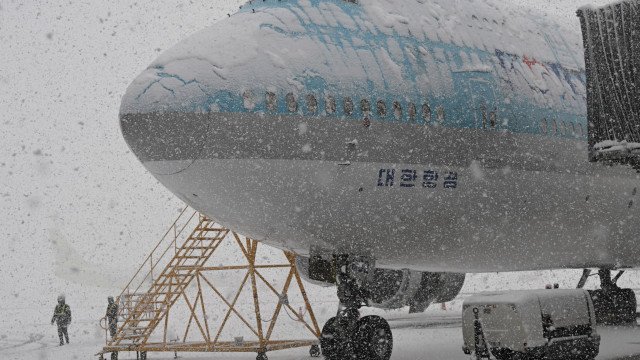

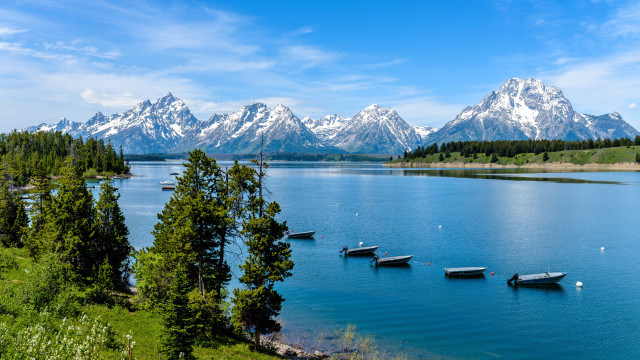




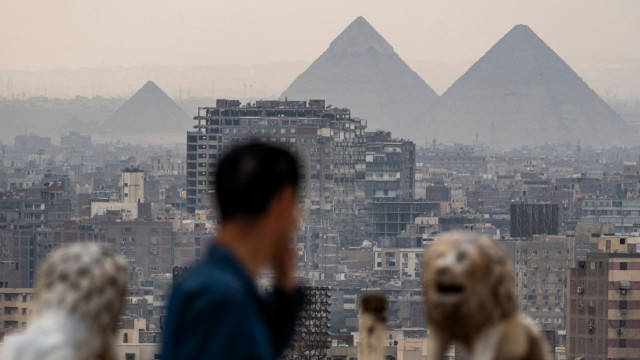

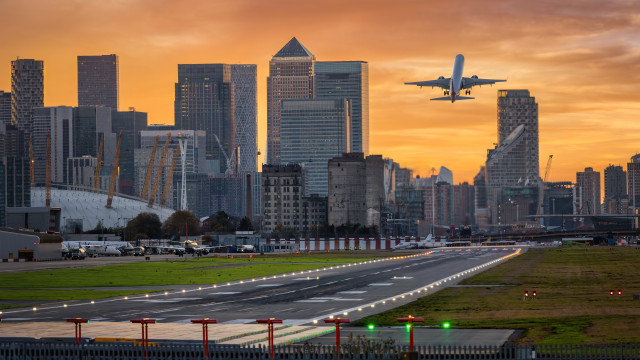
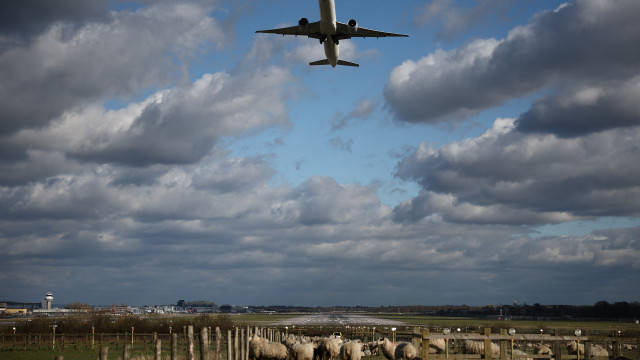




MOST READ
- Last Hour
- Last Day
- Last Week








